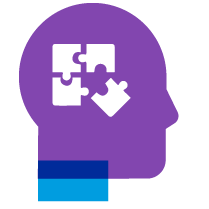Tips for candidates
Candidates who have been a part of ACDCs (assessment center development center), will find it relatively easy to transition to a virtual assessment center. Once you have a fair idea of various virtual assessment center exercises, tools, and virtual assessment center ideas, you can begin preparing in a more focused way.
In this section, we enlist the top ten tips that will help you succeed in a virtual assessment center.
1. Understand the basics
Before you appear at a virtual assessment center, it is crucial to know what to expect. Usually, it takes 2-3 hours for all VAC activities to complete. In addition, there could be specific tech requirements like setting up a webcam and microphone, accommodating tech installation settings in your system, etc. The more you learn about these details in advance, the better would be your preparedness on the big day.
2. Brush up your digital fluency
You may be required to switch screens and browse through various types of digital tools and virtual assessment center examples. Therefore, digital fluency becomes essential for success in a virtual assessment center. Your speed should be adequate without causing you to feel overwhelmed or anxious.
3. Familiarize yourself with key VAC components
In addition to basic digital fluency, it always helps when you are acquainted with the types of virtual assessment center platforms you would be introduced to during VAC exercises. While this guide gives you detailed insights into VACs, we recommend discussing the same with your organization to have a clearer understanding of what to expect.
4. Virtual assessment center practice!
As stated earlier in this blog, virtual assessment centers include complex assessments for aptitude, competencies, behaviors, and so on. Moreover, there are professional activities like case studies and presentations for which you should be well prepared.
5. Stay updated
Other than current affairs, it is vital to be aware of developments and trends specific to your industry and job profile. You should be confident about everything you say and write during a virtual assessment. And that kind of confidence comes from being updated with the most important highlights, data, statistics, and actionable recommendations from leaders and experts in your niche.
6. Ensure you are connected to a stable network
Virtual assessment centers are extensive and you cannot afford to deal with a fluctuating WIFI or malfunctioning network. A strong and stable internet connectivity is one of the top necessities if you want to succeed in a virtual assessment center.
7. Test your system and equipment for technical glitches
In tune with the previous point, you should also ensure that your computer and additional equipment are functioning smoothly. It is always recommended that you test everything a couple of times before the assessment day.
8. Be confident and dress well
You may be required to appear for a virtual face-to-face round during interviews, group discussions, and other activities. Therefore, formal attire is one of the simplest ways to ensure you feel confident and at the top of your game.
9. Make a checklist
Making a list of things to do and practice before a virtual assessment session can be a huge help in taking away the jitters. It also helps remember every detail that is important to you. That way, you can enter a virtual assessment center feeling stress-free and less overwhelmed.
10. Be and active listener to be an active contributor
This is a key advice for candidates taking part in group discussions. Any type of group activity requires presence of mind, patience, and professionalism. Always remember the competencies that a group activity measures: ability to work in a team, interpersonal skills, problem solving qualities, etc. To be able to check all those boxes for the assessors, you need to prove that you are a good listener as well as an active contributor.









 Behavioral Competencies
Behavioral Competencies Cognitive Competencies
Cognitive Competencies Coding Competencies
Coding Competencies Domain Competencies
Domain Competencies








































Would you like to comment?